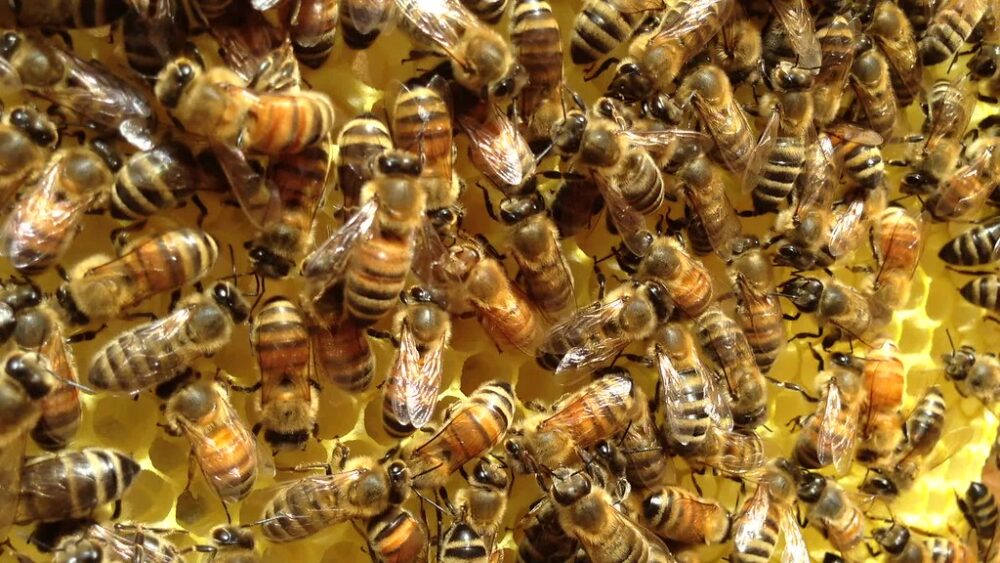If someone were to ask you the directions to a store, you may be able to explain the directions verbally, point to the general location, or even show them the location on a map. These abilities are largely restricted to humans, but other organisms have developed the ability to communicate in unique ways — notably, the honeybee.
The honeybee’s unique style of communication is well known, as most that have had contact with members of the honeybee’s genus, Apis, have seen the distinct “waggle dance.” The characteristic shaking and dancing and spinning of bees, the figure eights, and vibration of wings is recognizable to many as the way in which bees communicate. Despite familiarity with the waggle dance, there is still plenty unknown about the science behind this movement.
University of Munich researcher Karl Von Frisch proposed the idea of a complex bee language and communication system in 1973. Prior to his experimentation, it was commonly believed that insects were colorblind. Von Frisch refuted this with the idea of adaptation: Why would flowers develop beautiful flowers if not to attract pollinating insects?
The bees he experimented with learned to associate the color with syrup, showing that bees have some sort of color sense.
Von Frisch’s first experiments with bees tested their “color sense.” He placed a colored sheet of paper among gray papers, and he placed a syrup on the colorful paper. The bees he experimented with learned to associate the color with syrup, showing that bees have some sort of color sense. Interestingly, he also observed that if a singular bee noticed there was syrup on the plate, they would return to the hive, and a swarm of bees would arrive to enjoy the syrup. This observation introduced the idea of bee colony communication.
After further observation, Von Frisch noticed bees dance to communicate the location of food and other resources. Modern scientists have built upon this foundation and have researched the intricacies of this discovered waggle dance. The waggle dance is modified depending on the abundance and location of the food source. If there is a rich food source, the dance is more likely to occur and with more fervor. The observed dance is substantially shorter when the food is closer and much longer if the food is further.
Bees also use the odor of a feeding site to pinpoint the precise location, as without the odor details, bees would not know where they were truly looking. This odor information is communicated through the scent that remains on the bee after they visited the food site. Over time, members of a colony begin to recognize and even prefer specific scents. Odors within the colony may lead to young bees growing up to seek out foraging areas with a specific scent.
Bees don’t always use the information provided from the bee dance, but instead sometimes rely on their own past experiences. In a paper published in Molecular Ecology, researcher Anissa Kennedy and her team aimed to elucidate the factors that determine if bees will use the information provided in the waggle dance. This paper describes that age and experience determine if a bee will use social information to forage, with more experienced foragers relying more on their past forages. The paper goes on to summarize that the differences in methods of foraging can be explained by various molecular signals.
Bees also use the odor of a feeding site to pinpoint the precise location, as without the odor details, bees would not know where they were truly looking.
Kennedy and her team compared the genes of bees that use social information from bee dances versus bees that rely on their own prior experience. They predicted there would be differences in RNA transcripts among bees that forage with different methods. While the study found that there were no recorded transcript differences in the brain, they found there were genetic differences in the antennae. This indicates that variation in sensory perception determines if the bee will use social information or their own private information.
Despite the growing body of research pertaining to bee behavior and communication, there are still many uncertainties regarding the true cause. For now, it seems that the combination of intricate dance moves and a strong odor clinging to the bee’s body allows for bees to communicate. Imagine if you asked someone where the train station was and they started making figure eights … maybe now you would know what they’re trying to say.
Journal of Experimental Biology (2017). DOI: 10.1242/jeb.142778
Molecular Ecology (2020). DOI: 10.1111/mec.15893

